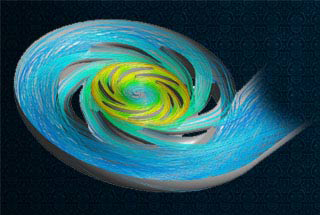Cutting Development Time for Pumps through Simulation Techniques

From simple household uses to high-end industrial applications, pumps remain a preliminary device make our lives easier. It

From simple household uses to high-end industrial applications, pumps remain a preliminary device make our lives easier. It

Industries that manufacture high-voltage cables are required to consider important design parameters when designing power transmission systems. One key aspect is the ability to deliver specified quantity of current without exceeding permissible temperatures. This requires designers to develop detailed thermal model considering all the variables such as cable structure, electric losses, installation geometry, environment where the cables will be installed and its proximity to other infrastructures, ambient temperature and effects of other external loads such as solar radiation.
Prior to the usage of CFD simulations, cable industry typically relied on empirical formulas and calculations as per international standards. While these mathematical equations work pretty well for systems installed underground, it becomes complex and cumbersome to develop a thermal model of new systems usually employed in the vicinity of existing infrastructures such as other cables and crossing regions often referred to as unfavorable thermal environment.
However, using multi physics simulation through computational fluid dynamics, extensive transient analyses can be conducted to study the effects of daily variations in solar irradiation and ambient temperature conditions. Current load changes can be directly applied against constant operating conditions to figure out actual scenario.
With multi physics, a parametric model can be built to optimize the geometry and cable laying arrangements based on the physics. This indirectly helps in improving the manufacturing processes as through simulation it is possible to decide the positioning of components such as power conductors and deliver hoses in cables.
Since computer simulations offer a clear perspective on what

The development of offshore structures has been phenomenal over the last few decades. The key driver for such development is primarily due to the constant urge to explore deep waters due to the ever-increasing oil demands.
Finite element method is a useful approach in such situations, helping design engineers to identify some of the critical design parameters that require quick attention to overcome excessive stress and deformation that may lead to catastrophic failure. The cost-effectiveness and safety of the offshore structure design is mainly dependent on the response demands in terms of wind and wave loads, bending moment and deformation. The design of these offshore structures is site specific and hence it is crucial to identify loads accordingly to ensure a prolonged useful life of the structure.
Developing a finite element model of tower systems can be improvised by utilizing beam elements for the tower legs. It is however important to determine the amount of accuracy required in the results. In many cases, full solid elements are required to capture stress details accurately.
The hydrodynamic loads are dynamic in nature; however, static pressure loads can be assumed to be used in performing structural analysis. The forces are usually calculated using Morison
Copyright ©2023. AAN CAE Technologies.